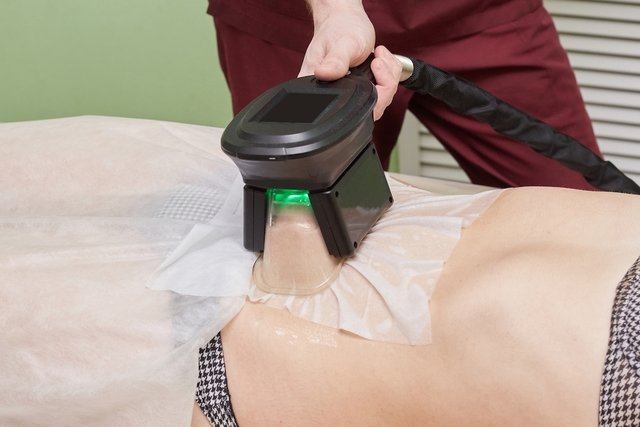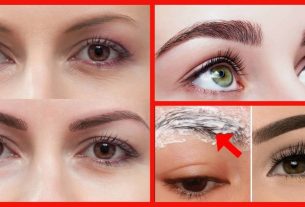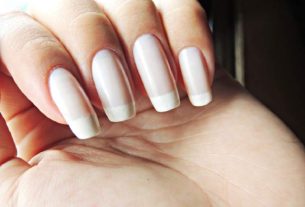Cryolipolysis is an aesthetic treatment indicated to eliminate the accumulation of fat located in various parts of the body, such as thighs, abdomen, chest, hips and arms, for example, when physical exercise or diet were not enough to eliminate it, and it can be done by women or men who wish to reduce measures.
This treatment, also known as blunt liposuction, is based on the intolerance of fat cells to low temperatures, rupturing when stimulated by the equipment. Cryolipolysis guarantees the elimination of around 25% of localized fat in just 1 treatment session.
In cryolipolysis, equipment is used that freezes fat cells and, therefore, for it to be effective and safe, the treatment must be carried out by a qualified professional, with a certified device and with up-to-date maintenance. When this does not happen, there is a risk of serious complications, especially the appearance of 2nd or 3rd degree burns.

When is it indicated
Cryolipolysis is indicated for:
- Remove localized fat deposits;
- Eliminate fat from specific regions, when physical exercise and diet are not enough to eliminate them;
- Reduce measures;
- Reshape body contour.
Cryolipolysis can be performed on different parts of the body, such as the abdomen, thighs, sides, arms, chin jowls, knees, armpits, or the back of the chest, for example.
Cryolipolysis helps remove fat, but does not affect weight, so it is not recommended for weight loss.
How the treatment is carried out
Cryolipolysis is a simple procedure, and to perform the technique, the professional places a protective gel blanket on the skin and then positions the equipment of the appropriate size for the region to be treated.
The device works by suctioning and cooling the area to around -7 to -10ºC for 1 hour, which is the time needed for the fat cells to freeze.
After finishing the cryolipolysis session, the device and gel blanket are removed from the treated area, and the area is massaged for about 2 to 3 minutes to help break down fat cells.
Where does cryolipolysis fat go?
When freezing fat cells, an inflammatory process occurs at the site, which leads to apoptosis, which is the programmed death of fat cells, which are then eliminated from the body naturally through the lymphatic system, through a process called phagocytosis, in which white blood cells “digest” dead fat cells.
In cryolipolysis, fat cells are not eliminated through urine or feces.
Types of cryolipolysis
There are different types of cryolipolysis that vary according to the technique used, the main ones being:
- Traditional cryolipolysis: it is done by applying the gel blanket to the region to be treated, and then the device that sucks the skin in the region and promotes the freezing of fat cells;
- Plate cryolipolysis: this technique uses a plate to freeze fat cells, not using the vacuum system to suction the skin, which reduces the risk of skin burns due to an error in placing the gel blanket;
- Contrast cryolipolysis: It is done using heat and cold to eliminate fat deposits. Heat is generally applied before and after cooling the fat cells, enhancing the effect of the treatment;
- Cryolipolysis 360: This type of cryolipolysis uses a 5-dimensional (5D) device, different from traditional cryolipolysis, which is 2D, promoting more uniform cooling and allowing the area to be treated more comprehensively.
The type of cryolipolysis must be indicated by the professional after evaluating the region to be treated and the objectives and risks of the treatment.
Care after treatment
After cryolipolysis, it is recommended to carry out a local massage session to even out the treated area. Furthermore, it is recommended that at least 1 session of lymphatic drainage or pressotherapy be carried out to facilitate the elimination of fat and speed up results.
It is not necessary to associate any other type of aesthetic procedure with the cryolipolysis protocol as there is no scientific evidence that they are effective. This way, all you need to do is perform cryolipolysis and perform lymphatic drainage regularly to get the desired result.
Before and after cryolipolysis
The results of cryolipolysis begin to appear in around 15 days but are progressive and occur in around 8 weeks after treatment, which is the time the body needs to completely eliminate the fat that has been frozen.
After this period, you should return to the clinic to assess the amount of fat eliminated and then check the need for another session.
The minimum interval between sessions is 3 months and each session eliminates approximately 4 cm of localized fat.
Does cryolipolysis hurt?
Traditional cryolipolysis can cause pain when the device sucks the skin, giving the sensation of a strong pinch, but which soon passes due to the numbness caused by the low temperature of the device.
After treatment, the skin usually becomes red and swollen, so it is recommended to perform a local massage to relieve discomfort and improve appearance. The treated area may be sore during the first few hours, but it generally does not cause any major discomfort.
Possible health risks
Cryolipolysis is a safe procedure, as long as it is carried out by a trained professional and the device is properly calibrated and the temperature is adjusted. If these conditions are not respected, there is a risk of 2nd to 3rd degree burns, both because of the temperature imbalance and because of the blanket that is placed between the skin and the device, which must be intact.
Additionally, pain, burning, redness, swelling, bruising, sensitivity or numbness of the skin in the treated area may occur, which may last from a few days to weeks after the procedure.
To reduce the risks, it is recommended that the interval between sessions be approximately 90 days, as otherwise there may be a very exaggerated inflammatory response from the body.
Who cannot do cryolipolysis
Cryolipolysis is not recommended for people in the following situations:
Furthermore, cryolipolysis should also not be performed on areas of flaccid skin, or those with wounds, cuts or lesions, scars, varicose veins, dermatitis, eczema, psoriasis or other skin lesions or inflammations.

Sign up for our newsletter and stay up to date with exclusive news
that can transform your routine!
Warning: Undefined array key "title" in /home/storelat/public_html/wp-content/plugins/link-whisper-premium/templates/frontend/related-posts.php on line 12
Warning: Undefined array key "title_tag" in /home/storelat/public_html/wp-content/plugins/link-whisper-premium/templates/frontend/related-posts.php on line 13



